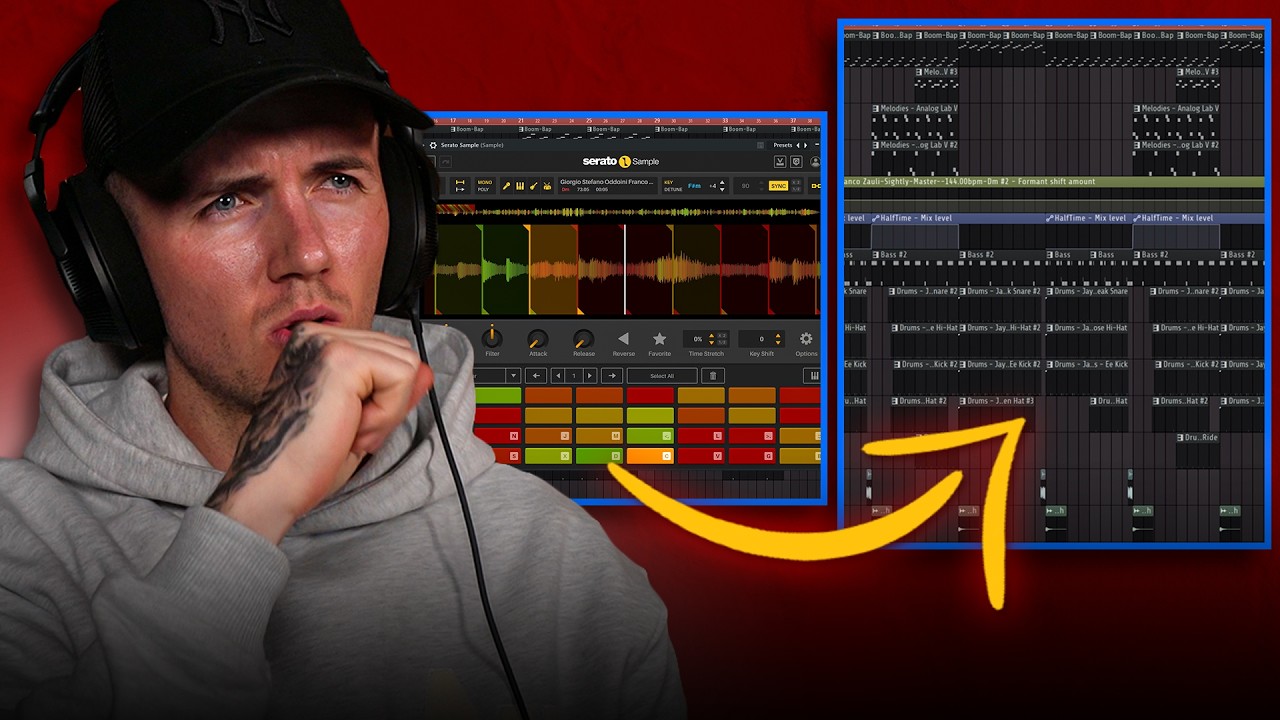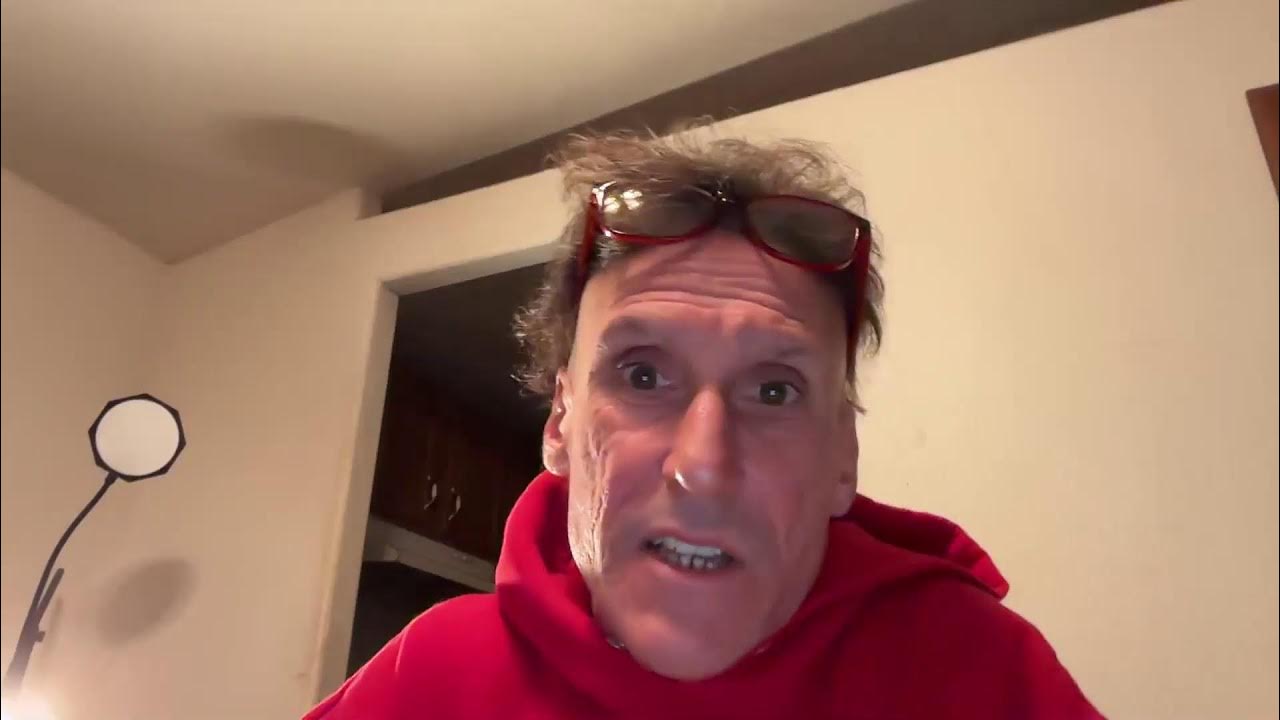Producing Hip-Hop Drums within Logic Pro: Avedon
Summary
TLDRIn this video, the focus is on creating compelling hip-hop drum patterns that support the rapper's flow. The creator emphasizes the importance of simplicity and bounce in drum design, starting with a basic hat pattern and snare. They demonstrate using a sampler to select 808s and adjust snare sounds for depth and rawness, suggesting pitch adjustments and filtering for variety. The process involves visualizing and adding extra percussion elements to enhance the groove, ensuring the drum pattern complements the melody and provides a solid foundation for the rapper's performance.
Takeaways
- 🎶 The script discusses the importance of drums in hip-hop music, emphasizing their role in creating the bounce for rappers to flow over.
- 🥁 The speaker advises not to overcomplicate drums, as their primary function is to provide a solid rhythmic foundation rather than to show off technical prowess.
- 👂 Starting with a simple hat pattern and a clap or snare is recommended to establish the rhythmic base of the drum track.
- 🔍 The speaker prefers using their favorite 808s and hats, and they suggest getting familiar with how they sound to make the right choices for the track.
- 🔄 Looping the main part of the drum pattern is a method to create a consistent rhythmic structure that can be built upon.
- 🎵 The use of a brush tool to create an eighth note pattern is mentioned, which helps in achieving the desired bounce for the drum track.
- 👻 The concept of 'ghost claps' is introduced, suggesting the use of subtle claps to add depth to the snare sound.
- 👉 Adjusting the pitch of the snare can add a darker and more raw tone to the drum sound, which might be desirable for certain styles of hip-hop.
- 🔊 The speaker suggests creating an extra snare sound with a filter to add variety and a turnaround element to the drum pattern.
- 🔄 Turning down the hi-hats is recommended to keep the drum pattern simple yet flavorful, allowing other elements to shine through.
- 🎼 The importance of visualizing the drum pattern and how it fits with the melody is highlighted, as it helps in creating a cohesive rhythmic structure.
Q & A
What is the main focus of the video script?
-The main focus of the video script is on creating drums for hip-hop music, emphasizing the importance of 808s, kicks, snares, and hi-hats to create a bounce for the rapper to flow over.
What is the advice given about not over complicating the drums?
-The advice given is to not over complicate the drums, as they should serve the purpose of providing a solid foundation and bounce for the rapper, rather than being a showcase of the producer's skills.
How does the script suggest starting the drum pattern?
-The script suggests starting the drum pattern with a simple hi-hat pattern and a clap or snare, using a sampler to select favorite 808s and hi-hats.
What is the significance of the 'bounce' in hip-hop drumming?
-The 'bounce' is significant in hip-hop drumming as it provides the rhythmic foundation that the rapper's flow will ride over, making it a key element in the music production process.
What is the role of the snare in the drum pattern described in the script?
-The snare plays a crucial role in the drum pattern by providing a punchy and slightly darker sound to the beat, which is achieved by pitching it down to add depth and rawness.
Why is it suggested to pitch the snare down in the script?
-Pitching the snare down is suggested to give it a darker and less generic sound, which can help the drum pattern stand out and provide a unique character to the hip-hop beat.
What is the purpose of creating an extra snare sound with a filter?
-Creating an extra snare sound with a filter is done to add variety and a turnaround element to the drum pattern, which can be used to mark the end of four bars or provide a different rhythmic feel.
How does the script describe the process of adding hi-hats to the drum pattern?
-The script describes the process of adding hi-hats by starting with a simple eighth note pattern and then adjusting and adding extra flavors to spice it up, such as triplet rolls or additional timing elements.
What is the importance of visualizing the drum pattern while creating it?
-Visualizing the drum pattern while creating it helps the producer to feel and understand the rhythm, timing, and flow of the beat, ensuring that it matches the melody and provides the desired bounce.
What is the script's advice on finding spaces in the drum pattern to add extra elements?
-The script advises finding spaces in the drum pattern where there isn't too much happening and adding little elements to fill it up, such as extra percussion or rolls, to enhance the overall rhythm and feel of the beat.
How does the script suggest adjusting the drum pattern to match the melody?
-The script suggests adjusting the drum pattern by listening to the bounce, visualizing the head rolls or extra timing elements, and finding spaces to add elements that will complement and enhance the melody.
Outlines

This section is available to paid users only. Please upgrade to access this part.
Upgrade NowMindmap

This section is available to paid users only. Please upgrade to access this part.
Upgrade NowKeywords

This section is available to paid users only. Please upgrade to access this part.
Upgrade NowHighlights

This section is available to paid users only. Please upgrade to access this part.
Upgrade NowTranscripts

This section is available to paid users only. Please upgrade to access this part.
Upgrade NowBrowse More Related Video

Hip Hop Drums Tips & Tricks - Hip-Hop Production Masterclass on Slate Academy

How To Actually Make Boom Bap Beats (Full Walkthrough)

How J Dilla humanized his MPC3000

LL Cool J - The Force ALBUM REVIEW

Heroes and Villains: Is hip-hop a cancer or a cure? | Lecrae | TEDxNashville

CHAFFEY: Lecture video, June 19
5.0 / 5 (0 votes)